Fairbanks Banjos
Construction & Tone Rings

Variations on the Electric Theme
The introduction of the Electric tone ring occured
at
a time that was ripe for banjo invention.
On March 24, 1891 a Boston banjo teacher, performer and
inventor, Gad Robinson was awarded
a patent for a banjo pot that had a scalloped tone ring
floating on the upper rim of a metal pot.
Robinson had other makers build banjos for him using
his unique pot design. It is interesting
that the Robinson banjos made by Gatcomb (roughly 1891
- 1896) and the Robinson banjos
made by Fairbanks (roughly 1896 - 1902) had necks that
were characteristic of these well known
makers, but identical pots possibly provided by
Robinson
himself.

The Gatcomb/Robinson Banjo
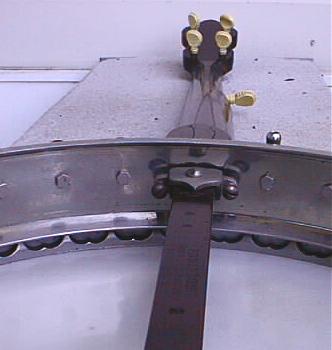
Gatcomb's version of the Robinson banjo
showing the scalloped metal tone ring
and the typical Gatcomb neck brace.
|
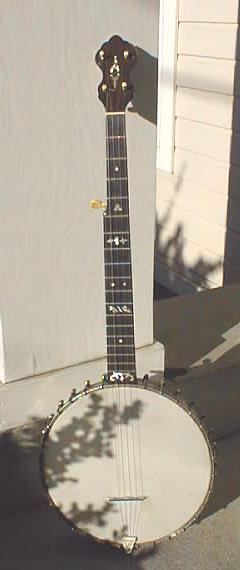 |
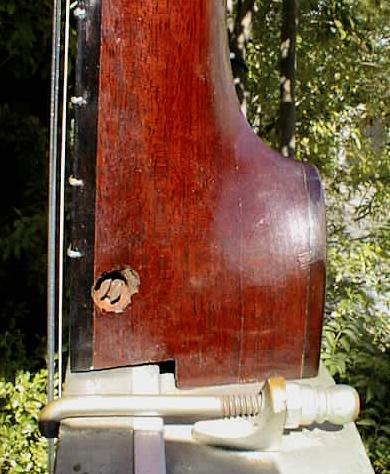
Typical Gatcomb hardware with
the "Little Gem" neck adjuster
available only on Gatcomb banjos.
|
The Robinson tone ring was somewhat similar to the
Inverted
Electric tone ring in its feature
of a metal structure supported on points resting on a
metal surface. It differed significantly
in it's lack of an external metal sheath which tied the
tone ring to the pot.
The tonal qualities of the Robinson pot are similar to
the Electric in brilliance and
separation of notes. It was an excellent
classical
banjo.
The Fairbanks/Robinson Banjo
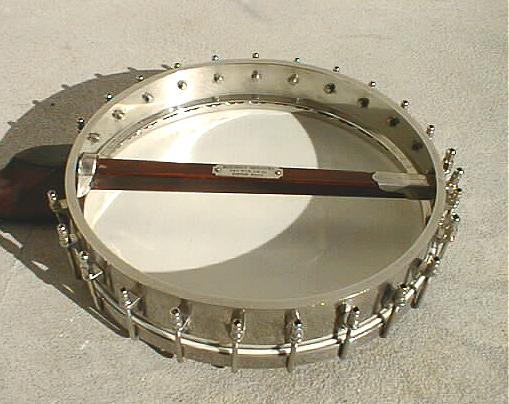
Fairbanks' version of the Robinson banjo showing the
typical
Fairbanks barrel nuts, neck brace and decorative dowel
stick ferrule. The metal plate has Robinson's name on it.
|
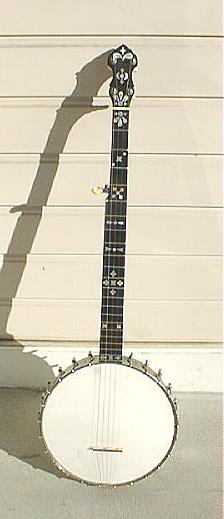
The inlay on the neck
is very similar to a
Fairbanks Electic No.1
|

When A.C. Fairbanks and William A. Cole ended their
partnership
in 1890 they each continued in the
banjo business with a significant new design.
Fairbanks
introduced his Electric tone ring,
while Cole introduced the Cole's Eclipse tone ring
which
was invented by his brother Frank E. Cole
and eventually awarded a patent on January 30,
1894.
One wonders whether the breakup of F&C
occurred because each of the partners felt more
attached
to their own concept. The workmanship and
artistry of the higher grade Cole banjos is
extraordinary,
rivaling or possibly surpassing that of Fairbanks.
The similarity of the Cole's Eclipse to the Curtis
Electric
tone ring is apparent when closely examined.
The Cole's Eclipse Tone Ring
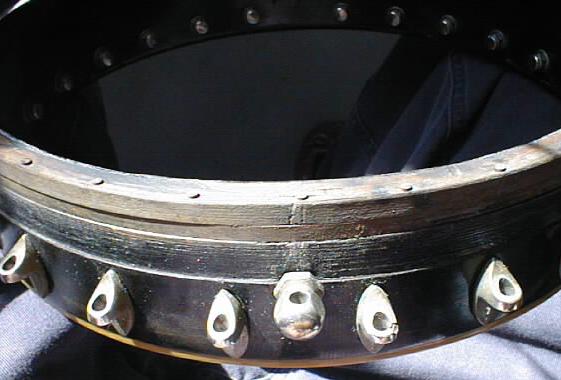
View of the embedded steel ring
and the steel rods which are in
contact with it and extend about 1/32" above the top of the pot.
|

The half spun top assembly
showing the flattened steel wire
and the sheath which extended
half way down the outside of the
wooden pot.
|

Assembled Eclipse tone ring with
the steel hoop slightly raised above
the top of the wooden pot.
|

Other companies later introduced tone rings which
took
advantage of the successful concept of a
metal hoop supported on points. Examples of the
Orpheum and Washburn tone rings are
shown on Tanabe Hayao's "Banjoland" tone ring page.
Another
example
is the Gibson
"ball bearing" tonering with the metal hoop supported
on spring loaded ball bearings.

- Return to main
Fairbanks
Banjos page -
Please contact
me with any additions, corrections or comments in general.
Thanks to Joel Shimberg for meticulous attention to
details.
![]()
![]()







